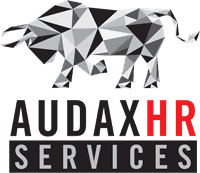Companies are having a tough time finding, hiring and keeping the top technical talent they need to keep their businesses running and growing. Employers used to think that appropriate pay was enough, but that’s changed: To attract and keep talented people, companies need to understand how their priorities have shifted — and be able to offer people what they’re really looking for.
To shed light on why top tech talent stay in a job or choose to move on, Bain surveyed more than 500 tech employees and 230 enterprise technology organizations globally. The survey delivered three important insights. First, the problem is very real: only 13% of these employers said they are able to hire and keep the tech talent they need most. Second, workers make employment decisions on much more than compensation alone. Finally, we learned that there can be a striking difference between the factors that influence a decision to join a company and those that determine how long a tech employee stays there.
What Employees Really Want
It’s almost always better to retain the workers you have than hire new ones. Employers often worry that their people leave because they’re not paid enough. And while it’s true that talented people will change jobs for more money, it’s not usually why they start looking. Our conversations with employees suggest a two-part decision process: dissatisfaction with their role may lead them to start looking, and once they do, they often find new jobs at higher salaries that help confirm their decision to move on. So what motivates workers to start considering greener pastures?
Our survey found that the top reason otherwise engaged IT employees decide to look for a new job is a lack of learning and growth opportunities: they can’t see how to move forward and continue to develop if they stay in their current role. When their future at a company looks like more of the same — or isn’t really defined at all — they begin to spend more time on Dice, Indeed and ZipRecruiter.
The second most common reason tech workers start looking at other jobs is lack of flexibility. About two-thirds say they want to keep a mix of remote and in-office work, and 46% said they would consider leaving a company that stopped offering the flexibility to work remotely. While a third of employees say that they would like to work remotely up to four days a week, they also see value in working together in person sometimes to help build a cohesive team. Flexibility entails more than just where work happens, too — it’s also when employees are expected to work, with whom and on what projects. (Flexibility is also one of the leading qualities people look for when searching for a new job, with 40% saying it was a top three reason for joining a company).
Rewards and recognition rank third in reasons people start cruising job sites. But, because it’s an area that employers can have direct and immediate control over, most companies have actively been improving the package. About 70% of companies said they have increased salaries and base pay over the previous year, 47% said they have increased bonus pay, about a third said they have increased health benefits and nearly one in four said they have added more time off.
In short, people want a supportive work environment — opportunities, flexibility and recognition are all elements of that. They’re not the only ones, however. Other aspects that really matter include diversity and inclusion. We found that diversity can be particularly important for attracting new talent. Companies that have clearly stated their ambitions to improve diversity and make their organizations more inclusive are about twice as successful at attracting and retaining top tech talent.
Inclusivity, on the other hand, is more important in keeping people than in hiring them. Factors like connectedness and teaming were relatively more important to employees in their decisions to stay. That may help explain why so many companies see high attrition rates hindering their efforts to diversify, and it underscores the need to invest in inclusivity efforts to improve retention.
Finally, there’s the question of how work is done. The latest technology and ways of working are also strong draws: more than 80% of tech employees say using modern tools and methodologies is very important. Companies that say they have had more success recruiting top talent are 30% more likely to work in agile and 16% more likely to organize work around products rather than projects.
What Employers Can Do
How should employers respond to these changing dynamics to help them find, hire and keep the technical talent they need to thrive?
The first step is to recognize that, just as companies offer a value proposition to their customers, they must also consider their value proposition to new hires and current employees. That proposition may lead with good compensation, but today it involves much more, including flexibility, opportunities for growth, inclusiveness and a modern working environment.
Second, recognize that job flexibility and modern technology are key differentiators that deliver an edge in hiring. Most companies are still figuring out how to manage this, and flexibility will take different shapes depending on an employee’s role, tenure and team responsibilities.
Finally, companies can set themselves apart by focusing on and investing in diversity and inclusion efforts. Companies that have clearly stated goals are much more successful at attracting top talent, and those where current employees feel more connected and included are more successful in keeping that hard-won talent on board.
The pandemic changed the conversation between employers and employees, as it exacerbated talent shortages that already existed. It’s more important than ever for companies to have a clear idea of the job features that make talented people want to join, stay and leave a firm. Compensation will always be an important consideration, but more employers are learning that there’s much more to the talent equation than just the numbers.
Based in Denver, Will Poindexter leads Bain’s Enterprise Technology practice in the Americas. Jessica Craig is an associate partner in San Francisco in Bain’s Enterprise Tech and Retail practices.
This article is reprinted from Harvard Business Review with permission. ©2022. All rights reserved.
This content was originally published here.



